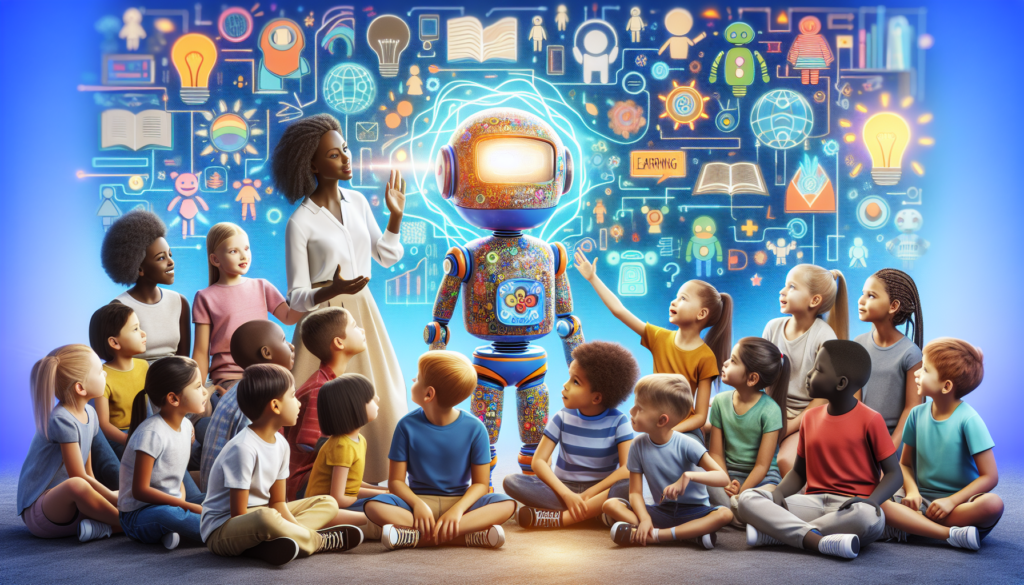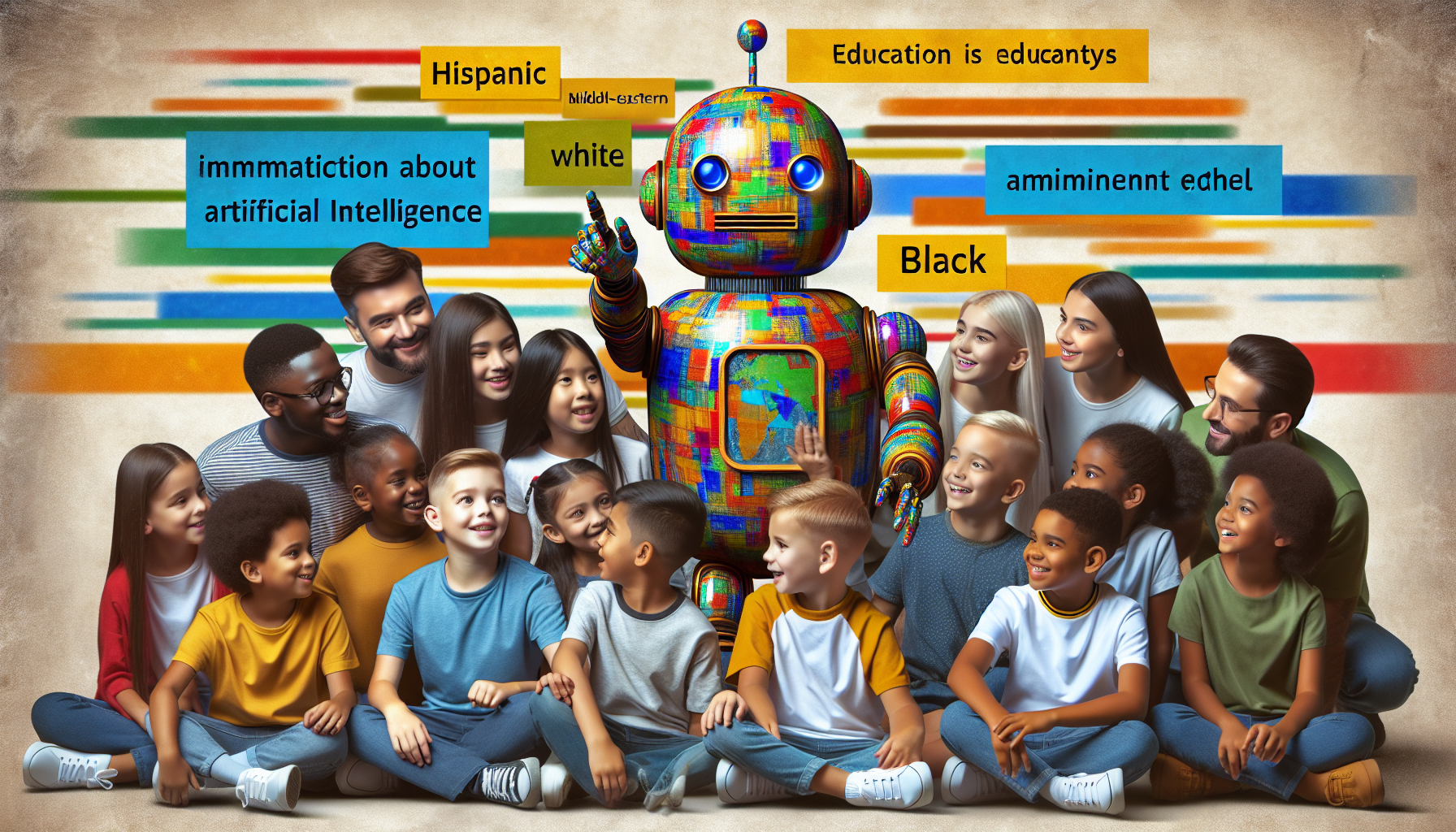Have you ever wondered how machines are able to think and make decisions, just like humans do? It’s called Artificial Intelligence, or AI for short. In this article, we will take you on an exciting journey to explore the fascinating world of AI and explain it to you in a way that’s easy for kids to understand. From self-driving cars to virtual assistants, AI is all around us, and we’ll uncover its secrets together. So get ready to embark on this adventure, where you’ll learn all about AI and how it works in the simplest of terms. Let’s dive in!
What is AI?
Defining AI
Artificial Intelligence (AI) refers to the ability of machines to imitate or simulate human intelligence. It involves the development and utilization of computer systems that can perform tasks that would typically require human intelligence, such as decision-making, problem-solving, and understanding natural language.
The concept of intelligence
Intelligence is the ability to learn, understand, and apply knowledge to solve problems and make decisions effectively. It involves skills like reasoning, learning from experience, adapting to new situations, and recognizing patterns. AI aims to replicate and enhance these cognitive abilities in machines.
AI and machines
AI is closely connected to machines as it involves programming computer systems to process and analyze large amounts of data using complex algorithms. These algorithms enable the machines to learn from patterns, make predictions, and perform tasks without explicit human intervention.
How does AI work?
Data and algorithms
AI relies on two key components: data and algorithms. Data refers to the information that is processed and analyzed by the AI systems. Algorithms are sets of instructions that tell the machines how to process the data, identify patterns, and make predictions or decisions based on that information.
Machine learning
Machine learning is a subset of AI that focuses on teaching machines how to learn and improve from experience without being explicitly programmed. By exposing machines to large amounts of data, they can learn from it, identify patterns, and make predictions or decisions based on that knowledge.
Training AI systems
Training AI systems involves providing them with labeled data, where the desired outputs are already known. The system learns by comparing its predictions with the correct answers and adjusting its algorithms accordingly. This iterative process helps the AI system improve its accuracy over time.
Making decisions
AI systems make decisions based on the patterns and information they have learned from the data. These decisions can range from recommending products or services, recognizing images or speech, or even controlling autonomous vehicles. The decisions are made by processing the input data through the trained algorithms to generate an output.

Different types of AI
Narrow AI
Narrow AI, also known as weak AI, refers to AI systems that are designed to perform specific tasks or solve specific problems. These AI systems excel in a specific domain, such as speech recognition or image classification, but they lack the ability to generalize their knowledge to other tasks or domains.
General AI
General AI, also known as strong AI or human-level AI, refers to AI systems that can understand, learn, and apply knowledge across various domains, just like a human being. General AI would possess human-like intelligence and be capable of performing any intellectual task that a human can do.
Superintelligence
Superintelligence refers to AI systems that surpass human intelligence in almost every aspect. These hypothetical AI systems would possess cognitive abilities far beyond human capabilities and could potentially outperform humans in all intellectual tasks.
AI in our daily lives
Smart assistants
Smart assistants, such as Apple’s Siri, Amazon’s Alexa, or Google Assistant, are AI-powered virtual assistants that can understand natural language commands and perform tasks like setting reminders, playing music, or providing information.
Recommendation systems
Recommendation systems use AI algorithms to analyze user preferences and provide personalized suggestions. These systems can be found in music streaming services, online shopping websites, or social media platforms, where they suggest tailored content or products based on user behavior and interests.
Social media algorithms
Social media platforms, like Facebook or Instagram, leverage AI algorithms to curate personalized content on users’ feeds. These algorithms analyze users’ interactions, interests, and demographics to determine which content is most likely to engage and interest each individual user.
Autonomous vehicles
Autonomous vehicles, such as self-driving cars, also rely on AI technology. They use sensors, cameras, and AI algorithms to perceive their surroundings, make decisions, and navigate safely without the need for human intervention. This technology has the potential to revolutionize transportation and improve road safety.

Benefits of AI
Automation
AI is often associated with automation, which means the ability of machines to perform tasks or processes with minimal human intervention. Automation can lead to increased productivity, reduced errors, and improved efficiency in various industries and sectors.
Improved efficiency
AI systems can analyze vast amounts of data quickly and accurately, leading to more efficient decision-making and problem-solving processes. This can save time, resources, and costs for businesses, allowing them to operate more effectively.
Medical advancements
AI has the potential to significantly impact the healthcare industry. It can aid in diagnosing diseases, identifying treatment options, and predicting patient outcomes. AI-powered medical advancements can improve patient care, enhance medical research, and potentially save lives.
Exploration and discovery
AI can be invaluable in scientific research and exploration. By analyzing large datasets and complex patterns, AI can generate insights, make predictions, and accelerate discoveries. This technology has the potential to revolutionize fields like astronomy, climate science, and drug discovery.
Concerns about AI
Job displacement
One of the major concerns about AI is the potential displacement of jobs. As AI and automation continue to advance, some jobs may become obsolete, leading to unemployment or the need for individuals to acquire new skills to adapt to changing employment opportunities.
Privacy and security
The increasing use of AI involves the collection and analysis of vast amounts of personal data. This raises concerns about privacy and security, as the misuse or mishandling of this data can lead to breaches of privacy, identity theft, or unauthorized access to sensitive information.
Ethical considerations
AI raises important ethical questions, particularly when it comes to decision-making algorithms. There is a need to ensure transparency, fairness, and accountability in AI systems to prevent bias, discrimination, or unethical practices, especially in areas like criminal justice or credit scoring.
Lack of human emotion
While AI systems can replicate human intelligence to some extent, they lack human emotion and empathy. This poses challenges in fields where human interaction and emotional connection are crucial, such as healthcare or counseling. There is a need to find the right balance between AI’s capabilities and human involvement.
AI in popular culture
Movies and TV shows
AI has been a popular topic in movies and TV shows, often portrayed as advanced robots or intelligent machines. Films like “Ex Machina,” “The Terminator,” or “Her” explore the complex relationships between humans and AI, raising philosophical and ethical questions.
Video games
AI plays a significant role in video games, powering non-player characters (NPCs) and determining their behavior and decision-making. AI algorithms enable NPCs to interact with players, adapt to their strategies, and provide realistic challenges.
Robots in real life
AI-powered robots are becoming increasingly common in various industries and settings. From robotic assistants in homes or hospitals to industrial robots in manufacturing, these AI-driven machines are changing the way we live and work.
Future of AI
Continued advancements
AI is a rapidly evolving field, and we can expect to see continued advancements in the coming years. As technology progresses, AI systems will become more powerful, efficient, and capable of tackling increasingly complex tasks.
Integration with other technologies
AI is likely to integrate with other emerging technologies, such as robotics, virtual reality, or augmented reality. This integration has the potential to create new possibilities and applications in various industries, from entertainment to healthcare.
Ethical and policy discussions
As AI becomes more prevalent in our society, there will be a need for ongoing ethical and policy discussions. These discussions aim to address concerns around privacy, bias, accountability, and the responsible development and use of AI technology.
Roles for future generations
The future of AI will require individuals with specific skills and expertise. There will be a growing demand for professionals in fields like data science, machine learning, and AI ethics. Future generations will have the opportunity to shape the development and use of AI and contribute to its positive impact on society.
Understanding AI’s limitations
Creativity and imagination
Despite its advancements, AI still struggles with creativity and imagination. While AI can generate content or make predictions based on existing patterns, it currently lacks the ability to produce genuinely original ideas or creative works.
Critical thinking
AI systems excel at processing and analyzing large amounts of data quickly, but they often lack the ability to think critically or question assumptions. Critical thinking remains a uniquely human skill that involves reasoning, evaluating, and making judgments based on multifaceted information.
Ignorance and experience
AI systems rely on the data they are exposed to for learning and decision-making. They cannot possess prior knowledge or experience beyond what has been programmed or provided to them. This limitation contrasts with humans’ ability to draw upon personal experiences, cultural knowledge, and common sense to make informed decisions.
Conclusion
Summary of AI
Artificial Intelligence, or AI, is the simulation of human intelligence in machines. It involves the development of computer systems that have the ability to process data, recognize patterns, and make decisions or predictions. AI can be categorized into narrow AI, which excels in specific tasks, or general AI, which aims to replicate human-like intelligence. Superintelligence is a hypothetical form of AI that would surpass human intelligence.
Encouragement and curiosity
AI has become an integral part of our lives, from smart assistants that help us in our daily tasks to recommendation systems that provide personalized suggestions. While AI offers numerous benefits, such as improved efficiency and medical advancements, there are also concerns, including job displacement and ethical considerations. AI’s portrayal in popular culture, like movies and video games, has stimulated our imagination about its potential. As the future of AI unfolds, continued advancements, integration with other technologies, and discussions on ethics and policies will shape its development. It is important to understand AI’s limitations, including its inability to replicate human creativity, critical thinking, and personal experience.
So, embrace the possibilities of AI, stay curious, and keep exploring the ever-evolving landscape of artificial intelligence!
